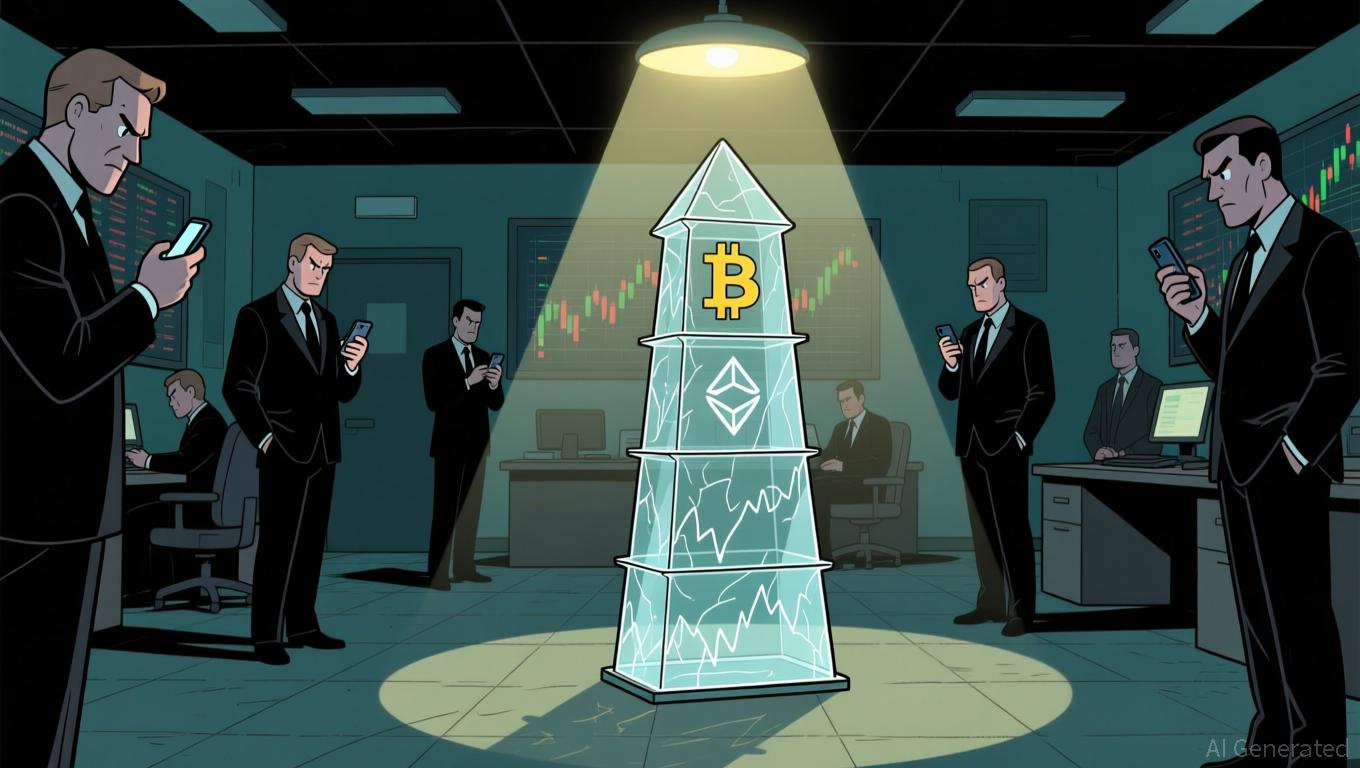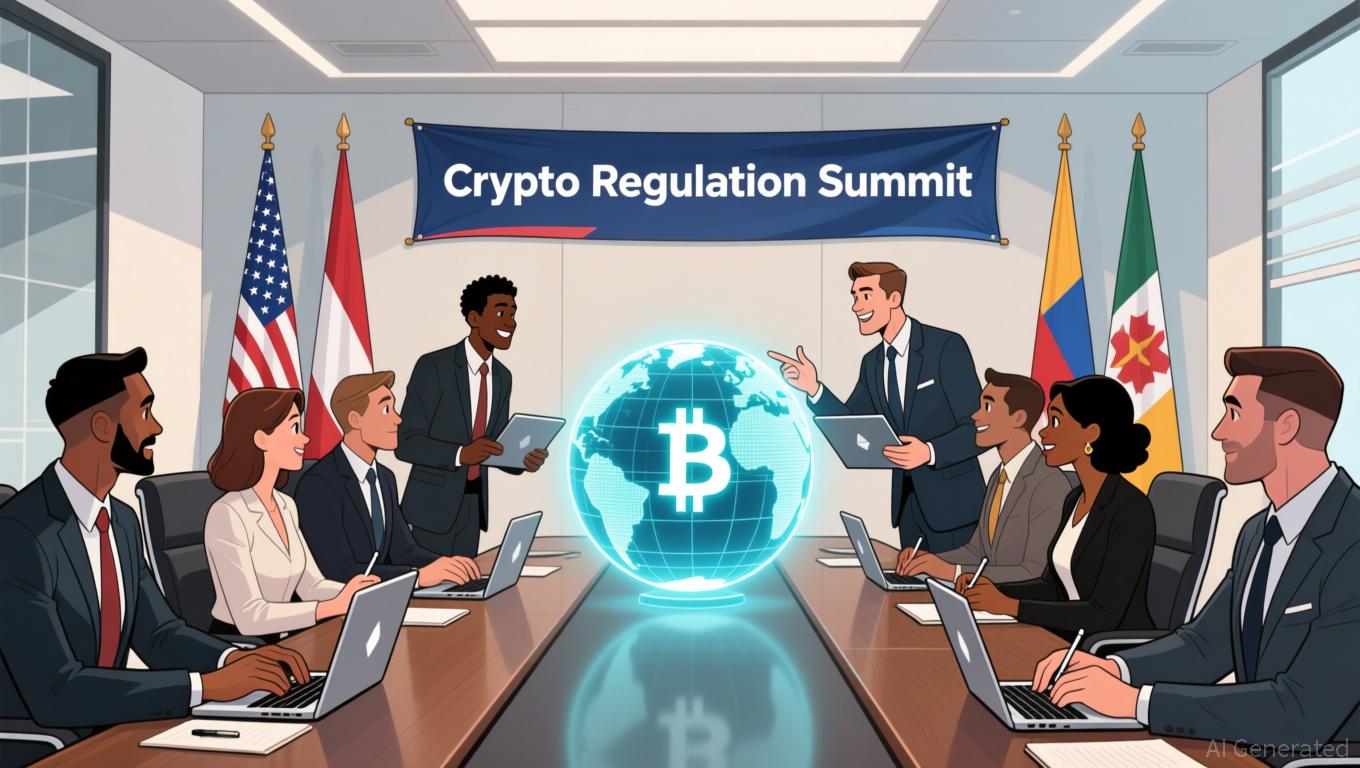COAI Token Fraud: Warning Signs in Cryptocurrency Ventures and Ways for Investors to Safeguard Themselves in 2025
- COAI token's 88% price drop in 2025 caused $116.8M losses, highlighting DeFi risks. - Technical flaws and regulatory gaps exposed systemic DeFi vulnerabilities through COAI's collapse. - 87.9% token concentration among ten wallets enabled manipulation and panic selling. - Experts urge due diligence, AI tools, and diversification to mitigate crypto risks. - The collapse underscores the need for transparency and unified global crypto regulations.
Warning Signs in the COAI Token Fraud
Technical Flaws and Smart Contract Hazards
The downfall of the COAI token revealed significant vulnerabilities within DeFi systems.A $116 million breach at the Balancer DeFi protocolin 2025 exposed the instability of smart contracts, while COAI’s own network was undermined by unstable leadership at C3.ai, including a class-action suit thatdamaged confidence. Those who neglected to confirm smart contract audits from trusted organizations such as CertiK or OpenZeppelinbecame susceptibleto widespread failures.Unclear Regulations and Disjointed Oversight
The CLARITY Act, which aimed to bring clarity to AI token rules,ended up causing uncertaintyamong U.S. authorities. At the same time, overlapping responsibilities—like the SEC and CFTC’s differing views on stablecoins—resulted in lapses in investor protection. In regions such as Southeast Asia, weak oversight and regulatory gaps allowed scams to flourish, as demonstrated bythe She Zhijiang case in Myanmar.Centralized Holdings and Market Manipulation
The distribution of COAI tokens showed87.9% held by just ten wallets, signaling excessive centralization. This setup enabled rapid sell-offs and price manipulation during liquidity issues. Such concentration often precedes collapse,as seen with the downfall of algorithmic stablecoinslikexUSDand deUSD.
Investor Protection Measures for 2025 and Beyond
Thorough Research and Evaluation
Specialists stress the importance of analyzing tokenomics, including how tokens are distributed, vesting schedules, and mechanisms to control inflationbased on industry insights. Projects with open and decentralized ownership are less likely to be manipulated. Investors should also check the security of smart contracts through public audits on sites like Etherscanas experts suggest.Verifying Teams and Communities
Teams that are anonymous or have unverifiable “advisors” are a major warning signaccording to security professionals. Investors should carefully review team members’ LinkedIn profiles and previous work. Genuine community involvement—reflected in active conversations on Telegram and Discord—often indicates authenticity, whilehype centered solely on price increasesshould raise concerns.Utilizing AI-Powered Risk Assessment and Regulatory Awareness
AI-based tools can identify governance weaknesses and detect fraudulent activityas highlighted in recent research. Investors should also favor platforms that comply with KYC/AML protocols to reduce the risk of identity theftas compliance specialists recommend. Keeping up with regulatory changes—such asthe EU’s MiCA and the U.S. GENIUS Act—is vital, as these laws are transforming compliance for stablecoins and AI tokens.Diversification and Platform Selection
Steer clear of tokens from regions with inadequate regulationas analysts advise. Spreading investments across projects with solid institutional support and proven histories helps minimize risk from single points of failure.The Coinbase class-action caseregarding account security further emphasizes the need to choose platforms with strong security measures.
Summary
The COAI token fraud is a powerful illustration of the dangers that come with the fast-paced evolution of DeFi. Despite ongoing technical and regulatory hurdles, investors can reduce their risks by focusing on openness, conducting comprehensive research, and adapting to new compliance standards. As regulators worldwide work toward unified rules, staying proactive will be crucial for protecting assets in the increasingly intricate world of cryptocurrency.
Disclaimer: The content of this article solely reflects the author's opinion and does not represent the platform in any capacity. This article is not intended to serve as a reference for making investment decisions.
You may also like
CBO reduces Trump tariff deficit by $1 trillion amid legislative disputes regarding rebate proposals
- CBO revised Trump-era tariff deficit savings downward by $1 trillion to $3 trillion through 2035, citing policy shifts like China-EU-Japan tariff cuts. - Legal challenges question Trump's executive authority on tariffs, with courts ruling against overreach while Supreme Court reviews cases. - Political clashes persist over $2,000 "tariff rebate" proposals, with Republicans prioritizing debt reduction over direct payments. - Economic analysis shows mixed impacts: short-term deficit reduction but uncertain

Bitcoin News Update: Is the Recent Decline in Crypto Liquidity a Short-Term Hurdle or a Permanent Change in Market Structure?
- October 2025 crypto crash reduced Bitcoin/ETH order-book depth by 30-25%, signaling structural liquidity withdrawal by market makers. - Stablecoin sector lost $840M since Nov 15, compounding fragility as weak volumes amplify price swings from routine trades. - Macro factors like ETF outflows ($360M weekly), Fed policy shifts, and Trump's tariff removal deepen liquidity challenges. - Thinner liquidity regime increases volatility risks for delta-neutral strategies, with even minor macro events triggering s

Senate Crypto Legislation Stalls Amid Disagreements on DeFi Oversight as Lawmakers Remain Split on Potential Risks
- U.S. Senate Banking Committee plans to vote by December 2025 on a crypto bill designating Bitcoin and Ether as CFTC-regulated commodities, resolving SEC-CFTC jurisdiction disputes. - Bipartisan negotiations face DeFi regulation clashes: Democrats warn of money laundering risks, Republicans oppose banning Trump's crypto business ties. - Proposed measures include customer asset segregation and enhanced disclosures, while Brookings Institution advocates merging SEC/CFTC for unified oversight. - Market urgen

U.S. Crypto Companies Caution: Ambiguous Regulations Jeopardize Leadership in Innovation
- Over 65 crypto firms, including Ethereum and Solana , urge U.S. regulators to establish unified rules for taxation, innovation, and developer protections to reduce sector uncertainty. - Industry highlights IRS's 2023 staking tax policy as unfair, seeking a $600 de minimis threshold and clearer guidelines to avoid penalizing unrealized gains. - DeFi advocates demand legal safeguards for developers after cases like Tornado Cash, urging SEC/CFTC to issue exemptions and DOJ to avoid prosecuting decentralized
